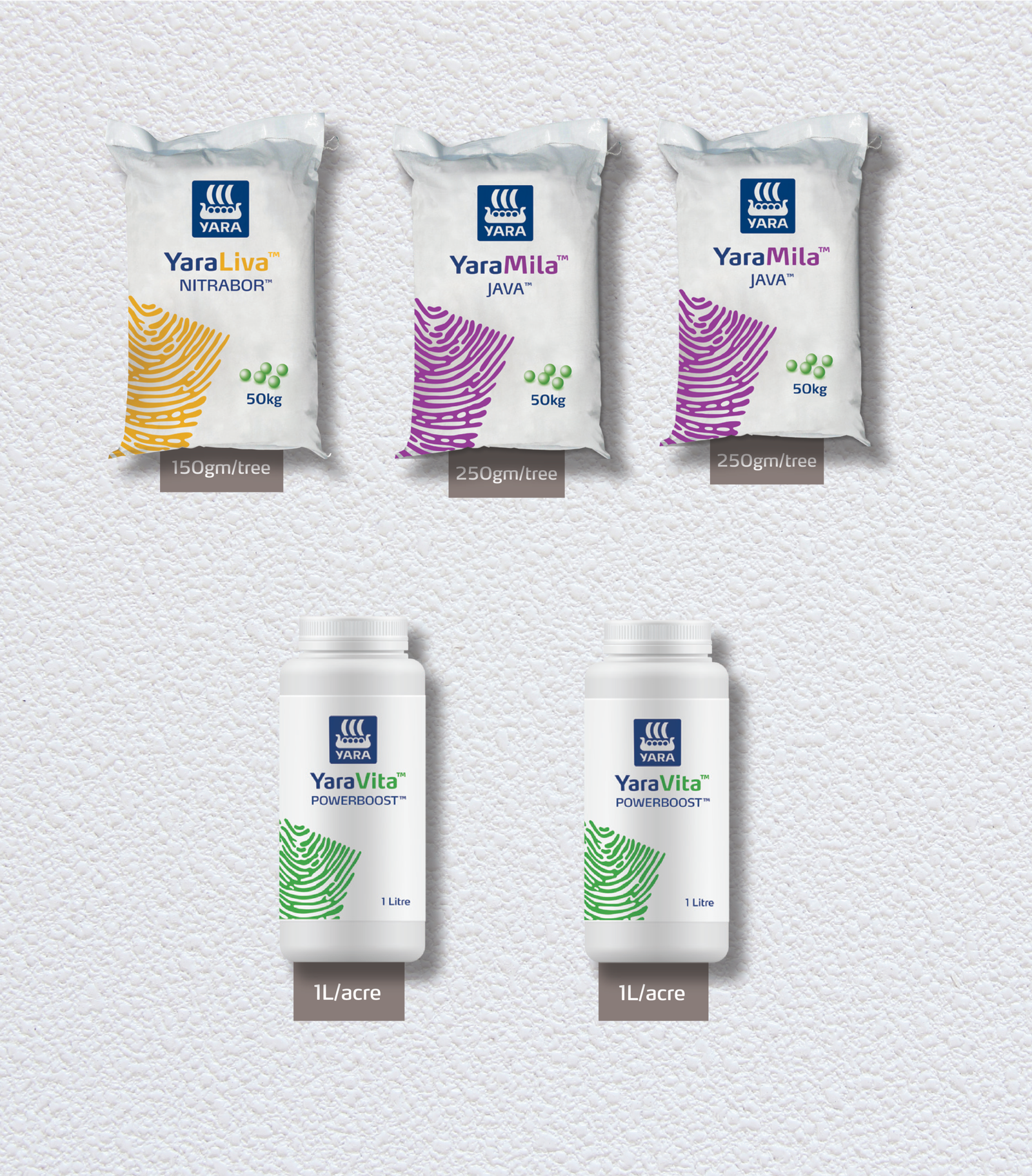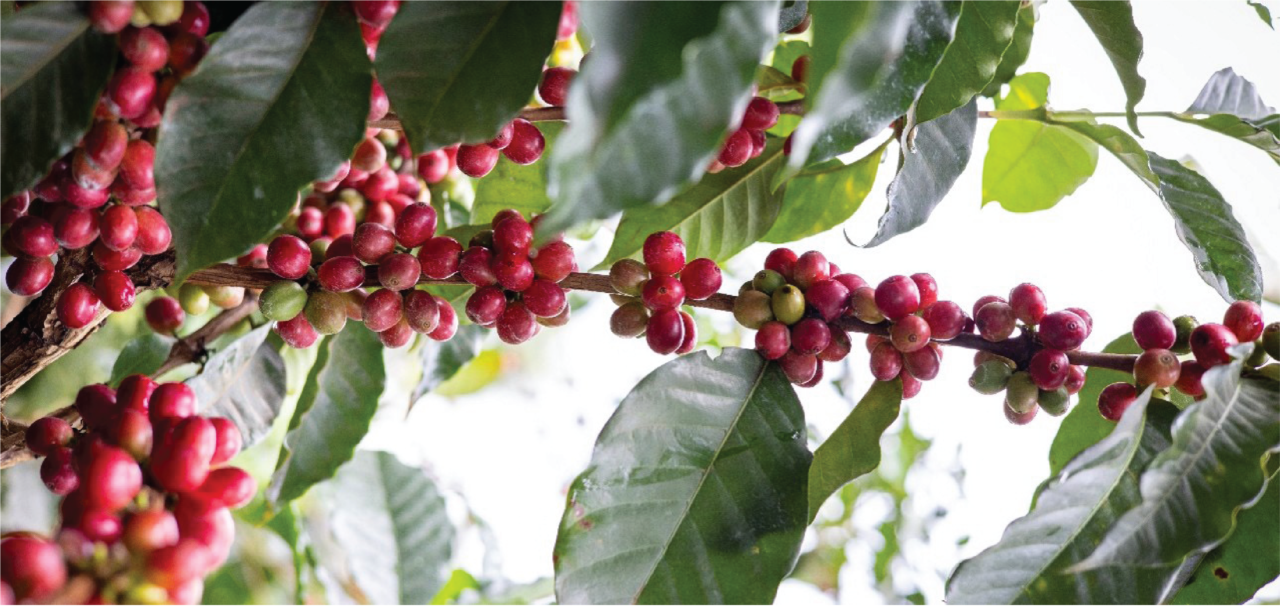Understanding the nutrition of coffee
Coffee is a major cash crop, contributing a significant portion of the country’s GDP and farmers’ incomes. Yields and quality of the crop have been inconsistent over the years with most farmers producing far below the potential. This is a gap that Yara is committed to bridge.
There are various factors that contribute to coffee productivity. They can be grouped into:
Environmental factors: Weather, agroecological zone, water, etc.
Soil factors: Chemical, physical and biological properties.
Genetic factors: Varietal differences.
Management factors: Nutrition, pests and diseases, plant density and age, shading, weed, harvest and post-harvest.
Meeting the coffee nutrient demand is key to productivity. For higher, profitable and sustainable productivity, it is crucial for coffee farmers to adopt a balanced approach.
Balanced nutrition refers to a holistic approach to nutrition management where all the key nutrients that the crop requires are supplied at the right quantity and at the right time.
In coffee, balanced nutrition achieves the following goals:
- Increases yields and farmer’s income through improved tree capacity, flowering, and berry retention.
- Maintains productivity of the trees for longer.
- Reduces the yield fluctuations, commonly referred to as alternate bearing.
- Enhances and maintains soil health and fertility.
- Enhances the quality of the beans.
- Improves disease resistance, hence reduces the cost of pesticides.
- Protects the environment and ensures sustainable resource use.

Main nutrition challenges in coffee production are:
- Low organic matter content: Organic matter ensures proper soil structure and improves water and nutrients holding capacity of the soil and acts as reserves for nutrients.
- Low soil pH: Nutrients availability and root development are limited under acidic conditions. Soil testing and liming is recommended to remedy the low soil PH.
- Low nitrogen levels in the soil which lowers the crop vigour and limits the potential yield of the crop.
- Low levels of secondary and micro-nutrients. Calcium, boron, and zinc are deficient in most of our coffee growing areas. This inhibits growth of new shoots, flowering and fruiting of the coffee trees, weak trees susceptible to breakages and diseases.
- Additionally, deficiencies in magnesium and sulphur are common, and this limits the growth and productivity of coffee.

Yara’s approach to balanced coffee nutrition is built on global experience and strong understanding of local growing conditions. Using deep understanding of coffee physiology, nutritional requirements, and local soil conditions, Yara has designed a programme to cater for all the coffee nutritional requirements to meet all the objectives above.
Post-harvest and before new flush: Apply YaraVita POWER BOOST at a rate of 1 litre per acre. YaraVita POWER BOOST is a high-quality foliar fertiliser with high levels of boron and zinc as well as magnesium and nitrogen.
This will result in improved tree recovery, budding, branching and formation of broader dark-green leaves.
At the onset of flowering: Apply YaraLiva NITRABOR at a rate of 150g per tree to supply the crop with fully available calcium and boron. This will reduce flower abortion (resulting in more berries), enhance uniformity in ripening (reduces harvesting costs), strengthen the plant and improve resistance to diseases.
At berry formation and expansion, apply YaraMila JAVA, a compound NPK fertiliser with added secondary and micro-nutrients to meet the high nutrient demand during the berry development period. This will result in greater yield, better screen size, density, quality, and improved tree health.

Download Yara Kenya Coffee brochure👉 https://drive.google.com/file/d/1VLNPQwq27jiOjw31dLd_tlJBHIcV4wR8/view?usp=sharing



